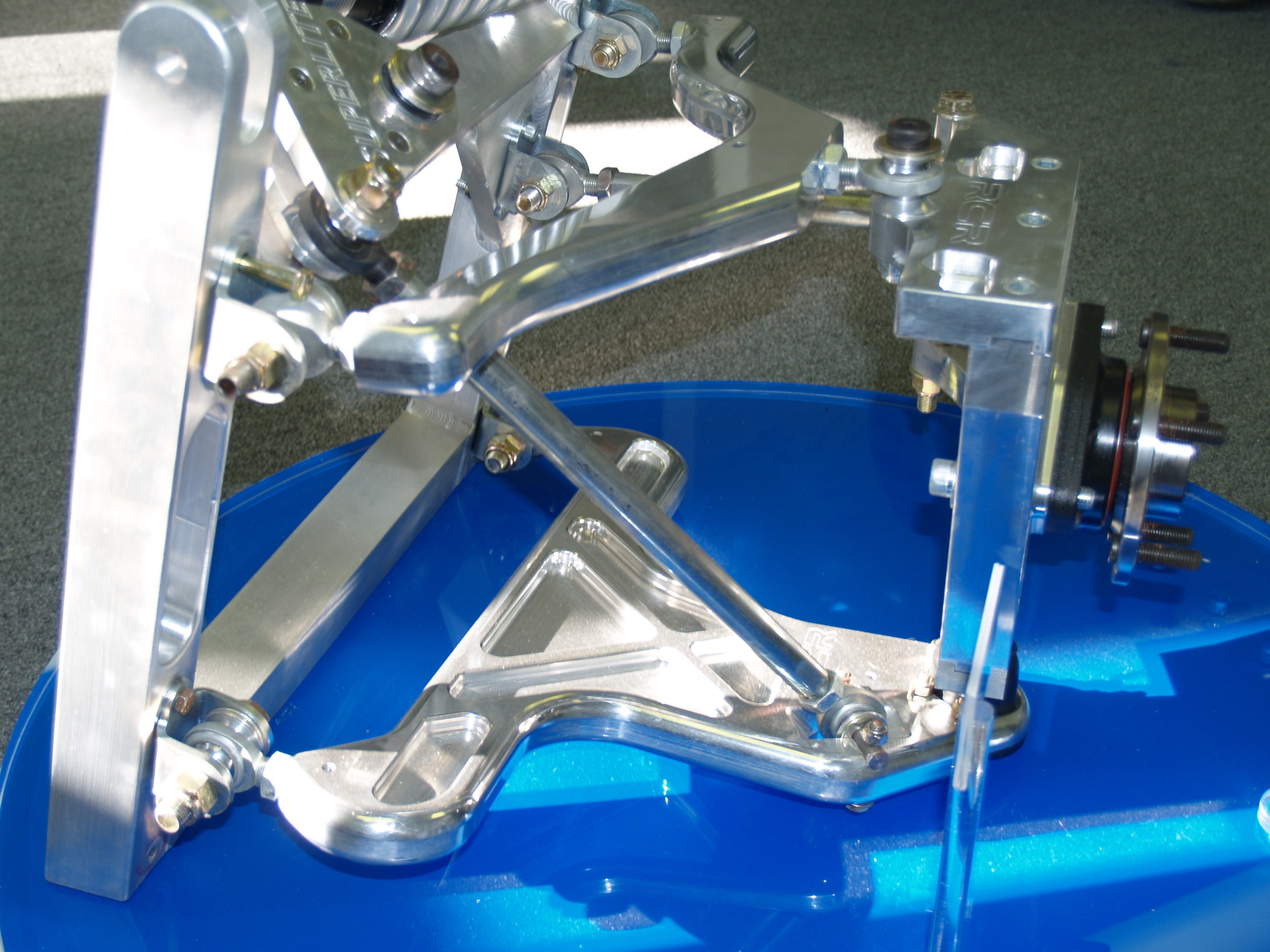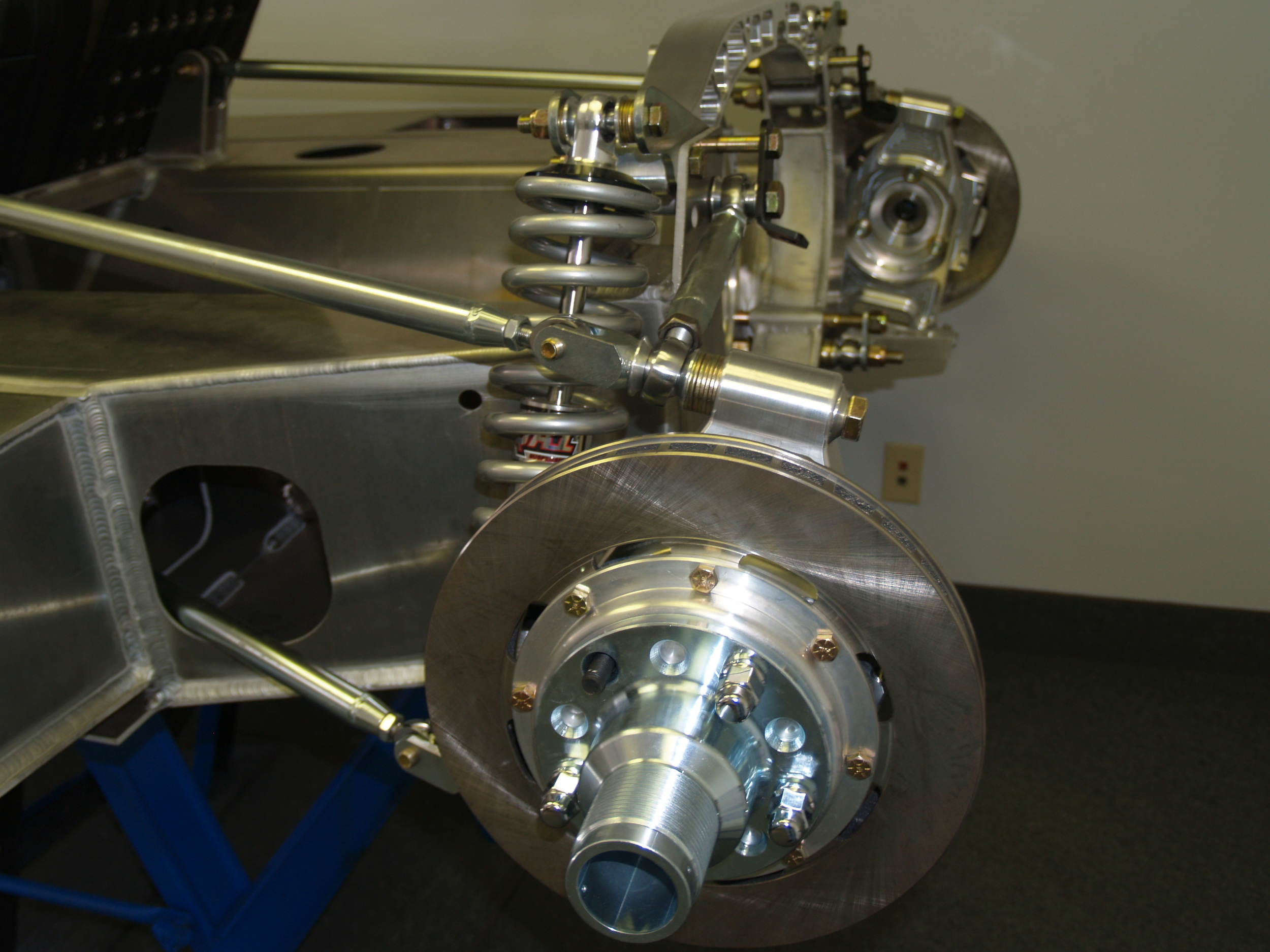CNC-Machined Suspension
Virtually all component cars built today use either fabricated suspension pieces, or re-use parts from a donor car.
The justification for this approach is almost always the same – it costs less. But that isn't really a great reason to skimp on what is arguably one of the most important parts of a car, especially a high-performance car like the ones Superlite create.
The problem with welded tube control arms is that they tend to either be weak, or incredibly bulky. What's worse, they make it hard to identify defects like poor welds under coatings or corrosion. And although some of the original cars may have had this kind of design, they were never intended for the harsh environment of the street, or even modern tires. And of course, in a race car, these parts were examined after every race and replaced based on time, before they failed on the car, something most street car owners just don't do.
What about re-using suspension pieces from a production car? It sounds good in theory, as the engineering is already done, right? Well, if you are building a car that is a clone of the donor, yes, it probably is. But, of course, you aren't. And those Corvette control arms that look pretty spiffy are designed for a front-engine car, with a completely different weight distribution, and suspension dynamics. They aren't the right choice for any mid-engined car.
For all those reasons, and more, Superlite manufactures most suspension parts (typically control arms and uprights) from billet aluminum, designing them for maximum strength, minimum weight and with the capability to support the stresses of modern tires (road and race) and the harsh environment of both the street and the track. A further benefit is that they are very resistant to the kind of corrosion that eventually destroys steel tube parts, and any cracks or other impending failure points are readily visible, improving safety. It's a side benefit that they do all this while looking great. :)
It costs more to make these parts that way. And frankly most manufacturers don't have modern CNC machining centers like Superlite, or the design tools needed to create these parts effectively, or skills honed over decades that make it possible to manufacture them at relatively low cost, even if they wanted to.
But is contributes to the best handling and safest component cars on the market.











